Criticism of former Senator Chuck Hagel for not backing the 2007 US “troop surge” in Iraq demands an explanation of why that relatively small reinforcement was not the main driver for reversing Iraq’s descent into violent chaos. In fact, when proposed in late 2006, there was widespread doubt about its potential for success among experts. And that skepticism was not, as detractors allege, off target. In reality, a different change in Bush Administration Iraq policy was the primary game-changer. Nonetheless, widespread belief still persists that the troop surge alone reversed the downward spiral in Iraq during 2003-2006. Some have tried to correct the record, but without much success.
When I served with the Iraq Study Group (ISG) led by former Secretary of State James Baker and former Congressman Lee Hamilton in 2006, many of its core Middle East experts felt the “troop surge” would fail because it was far too small. It increased US troops in Iraq by less than 20 percent. The situation, which included the robust Sunni Arab insurgency, widespread al-Qaeda in Iraq (AQI) terrorism and rampant sectarian cleansing, had gotten too far out of control for so few troops to make a real difference. Some believed as many as five times the 21,500 troops the Bush Administration sent in were needed. After all, troop levels had risen and fallen modestly before with little change in what had been a grindingly indecisive anti-insurgency war.
Unknown to the ISG (and evidently most of everyone outside the executive branch) the Bush Administration had quietly made another decision truly capable of sparking a major improvement on the ground in Iraq. The White House agreed to a deal with the bulk of the Sunni Arab insurgents fighting US forces. The insurgents not only wanted to stop fighting US/UK forces, but also to partner with Coalition forces against al-Qaida in Iraq. Although holding their own and inflicting heavy casualties, the insurgents had tired of suffering heavy losses themselves, were appalled by damage to their own communities from the fighting, and had been angered by extremist AQI abuses in their home towns and villages.
In fact, insurgent leaders began approaching US forces over two years earlier with the same offer. But it was rebuffed by the Bush Administration (despite the support of many US military officers in Iraq) because the Shi’a-dominated Iraqi government bitterly opposed such a deal. In late 2006, however, in the face of a severe spike in violence — and despite more objections from the Iraqi government — the US accepted the deal. That triggered what was called Iraq’s Sunni Arab “Awakening” (up to 100,000 Sunni Arab insurgents changing sides).
It took nearly two more years of hard fighting to bring most all Sunni Arab insurgents into the arrangement, weaken the power of AQI, and curb sectarian cleansing. The modest US “troop surge” improved tactics set in motion by General David Petraeus, and gains in Iraqi Army professionalism helped too, but these were not nearly as critical as what some called the far more sweeping “deal with the devil.”
Sadly, Iraqi Prime Minister Nouri al-Maliki, who objected to the deal well into 2008, continues to exclude the Sunni Arab community from the Iraqi political mainstream. Despite assurances to the contrary, he has hounded many Sunni Arab fighters who took part in the “Awakening”, arresting and even taking out a good number of them. This has soured Sunni Arabs on Maliki and his Shi’a allies, causing enough Sunni Arabs to resume assisting AQI to make it difficult to stop the lethal bombings.
Why the decision to make this deal with the vast majority of the insurgents was withheld from the Iraq Study Group (and others) is unknown to me. It almost surely would have changed our recommendations, and likewise might well have made lawmakers like Chuck Hagel less skeptical of what otherwise appeared to be an inadequate fix in the face of a far greater challenge.
Equally bizarre has been the sloppy use of the US “troop surge” by most American media outlets as misleading shorthand for everything that altered the Iraqi playing field back in 2007-2008. As a result, critics continue to hound opponents (like Hagel) about a troop surge that could well have been a military failure if not for the stunning, belated, and initially secretive deal that transformed most of our Sunni Arab foes in Iraq into American allies.
Photo: US Army soldiers move down a street as they start a clearing mission in Dora, Iraq, on May 3, 2007. Soldiers from the 2nd Platoon, Alpha Company, 2nd Battalion, 3rd Infantry Regiment, 3rd Stryker Brigade Combat Team, 2nd Infantry Division are patrolling the streets in Dora. DoD photo by Spc. Elisha Dawkins, US Army. (Released)

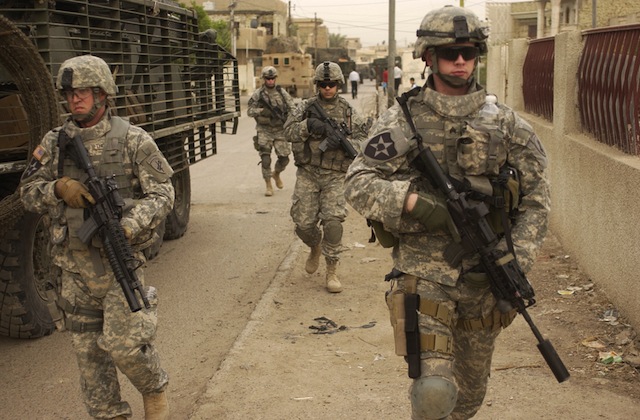
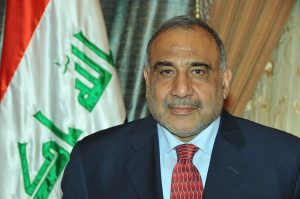
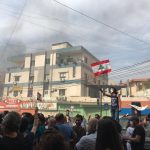
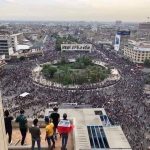
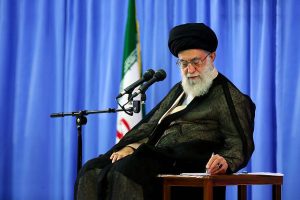
Thank you for reminding people that troop strength was not a major factor in the reduction of violence, and reminding people of the Sons of Iraq program.
I used data from Brooking’s Saban Center Iraq Index to put together this graph of the surge. It could be a bit clearer. http://www.languageandpeace.com/blog/combined_surge.gif
I would add, because I am much too blunt, that Gen. Casey was a sock puppet of the Bush administration while Gen. Petraeus was a thinking human being, and that made a big difference, too.
Then, about six months after the level of violence started going down, Muqtada al-Sadr declared a ceasefire (not always observed by his supporters).